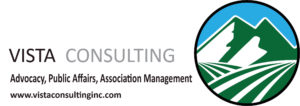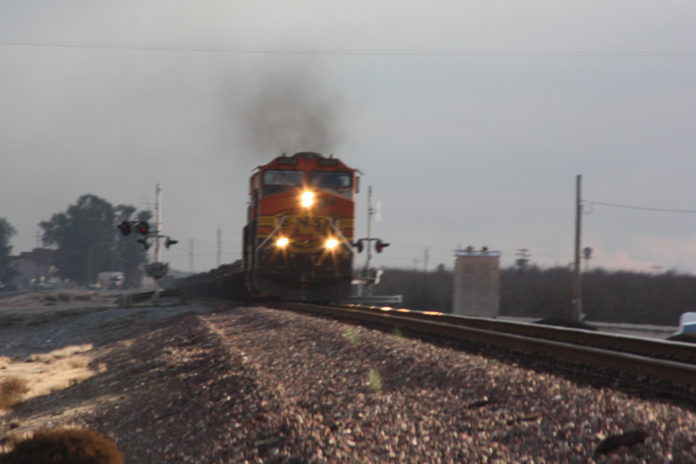By Joel Hastings
Using the by now only too familiar Zoom technology, a special meeting of the Madera County GSAs’ Advisory Committee was held Sept. 3, 2020 called to order at 2:05p.m. by Devin Aviles, committee chair. Madera County Director of Water & Natural Resources Stephanie Anagnoson spoke about the meeting rules for Zoom use. Next was the pledge of allegiance with cameras off, followed by the roll call by Mike Linden, deputy county attorney, who announced who was present, seven members and five alternates.
The next item was public comment with Chair Aviles reading the rules, but there were none.
The Director’s report by Anagnoson followed with items she’s been working on including assessment rate studies; a data management system; a water market meeting to be held Dec. 1; selection of a vender for satellite ET groundwater monitoring; several recharge studies; and two Prop 68 domestic well inventories in both Madera and Chowchillas Subbasins. She said there had been a glitch with the Calif. Dept of Wildlife in obtaining a flood control permit for the Ash Slough.
Committee member Bryant Elkins asked where he could see information on water allocation rates. Anagnoson said nothing yet is on the website but a recent committee meeting confirmed dates for people doing studies. She assured that the rate process will be very public, but there is nothing to review yet.
Chairman Aviles asked for public comment, and Brad Samuelson asked about when and where recharge studies are taking place. Anagnoson said a kickoff meeting will be held next week. Paul Provenzano asked how will GSA fees will be collected? He agreed with Anagnoson that adding them to property tax bills is easiest but it’s not clear they will be set in time for this year, in which case they will be billed directly to participating property owners when they become available.
Note to readers: Details of the following presentations – SAFER and Water Allocations – can be found on the Madera County website at https://www.maderacountywater.com/county-gsa-advisory-committees// We have done our best to capture the main points of discussion, focusing on questions and comments from the committee members and the public. But we recommend going to the documents themselves on the website for full details.
The SAFER Program
The next agenda item was a description of the SAFER program, presented by Adriana Renteria and Itzel Vasquez-Rodriguez of State Water Resources Control Board. SAFER, the program for Safe and Affordable Funding for Equity and Resilience, is a comprehensive set of tools, funding sources, and regulatory authorities designed to help struggling water systems sustainably and affordably provide safe drinking water to their customers, meeting the goal of safe drinking water for all Californians. Through its Division of Drinking Water, the State Water Board is responsible for enforcing federal and state drinking water standards. More information is available at SAFER@waterboards.ca.gov.
Rodriguez presented the SAFER Program which was developed from SB 200 in 2010 providing money to the State Board each year to help communities water systems have safe, clean, affordable drinking water… now a constitutional right in California. Currently the Fund expenditure plan directs how funds are to be spent, currently totaling $496 million from the general fund, drinking water bond funding, a revolving fund and Prop 1 groundwater. Funds are to be used for both short term – water replacement – and long term – education and planning. Reaching smaller systems that are out of compliance is the priority.
There is a SAFER Advisory Group of 19 members to advise the State Water Board, meeting quarterly in public. Currently there are 10 spots available and applications are being accepted. The application is online and available in English and Spanish at www.waterboards.ca.gov/safer. There is a recording of a meeting held to review the application process.
On Sept 11th there will be a virtual advisory group meeting with a SAFER update to the Board. Meetings are scheduled in October for risk assessment for small systems, in November another webinar and an advisory group meeting in December.
Renteria continued, inviting interested people to get involved, by visiting the SAFER website to get on the mailing list, to apply for Advisory Group membership and to attend future meetings and webinars. She thanked those community activists and workers who had advocated for a program like this.
From the public, Geoff Vanden Heuvel asked how the SAFER program interacts with CV Salts management zones? Renteria replied they want their smaller systems to be identified in Salt Management zones. And GSAs can apply to help individual systems meet quality standards.
Advisory Group member Madeline Harris from the Leadership Council offered the opinion that the SAFER program was not designed to “let growers off the hook,” and that responsible parties must mitigate their negative impacts.
Renteria replied no doubt $130 million per year is not enough to solve all the problems. Trying to balance emergency drinking water right now with longer term sustainable solutions is always the challenge. There is a need for collaboration among groups which SAFER wants to foster.
Paul Provenzano asked about funding for filter systems. Adriana replied that filters are a short term and interim solution, requiring lots of operations and maintenance oversight. So SAFER could apply but would want to work toward a longer-term solution for that kind of system.
Chairman Aviles thanked the presenters, who expressed their appreciation for the interest shown, saying they would stay in touch with the GSA.
Water Allocations
Next up was an update on water allocations, the elephant in the middle of the room. Presentations were made by Mike Linden, the Madera County Deputy Counsel; Greg Young, of Tully & Young, consulting civil engineer who has been a regular part of this process; and Anagnoson. Each one presented a portion of the 37-page document that is on the County website and can be found here at https://www.maderacountywater.com/wp-content/uploads/2020/08/Allocation-Presentation-for-Madera-County-09012020-Final-GEY-SA-ML.pdf
Linden presented something of a primer of the legal issues involved with water rights and allocations. He said a water right is legal permission to use a reasonable amount of water for a beneficial purpose. Not a right to the water itself, but a right to use. He said overlying groundwater rights are determined by ownership of property over the water. There is an active right when the water is being used and a dormant right when it is not being used.
groundwater rights are determined by ownership of property over the water. There is an active right when the water is being used and a dormant right when it is not being used.
He went on to say that over-drafting is per se an unreasonable use of water, so there is no right to pump more than the sustainable yield to the basin. “Beneficial” can be domestic, irrigation for ag, municipal, industrial and fish and wildlife. He said there is no “right” to sell what you don’t use. Or take credit for its use on other land. SGMA allows, in fact requires, GSAs to manage overdraft over a 20-year period.
Anagnoson presented the outline of the allocation approach, which involves establishing a water budget for ag water users. It will decrease over time to reach sustainability. Fees can be attached to fund the program for administration and infrastructure improvements, like recharge basins. Details of her presentation can be found on the Madera County website here https://www.maderacountywater.com/wp-content/uploads/2020/09/Allocations-within-the-Madera-County-GSAs-AC-Report-draft-4-09032020.pdf
She explained there are three types of water for ag use. Sustainable yield of native groundwater, which could be offered on an “opt in” or “opt out” basis. Those who opt in would be agreeing to the fees associated with the management of the yield. If someone chooses to opt out, they will still have access to domestic water and stock water used for cattle and ranching. There could be a process to opt in after a period, perhaps paying back fees as well as current charges.
A second category is transitional water, water that is part of the continuing overdraft within the GSAs and is accepted by the other GSAs as a strategy to manage the economic transition to lower consumptive use of groundwater. It could be divided into two pools… Pool #1 would be 70% of available transitional water; and Pool #2, the remaining 30%, plus any water not allocated in Pool #1.
To reflect actual farming practices, the definition of a “farm unit” might have a size limit but could be property owned by one family or organization and have some proximity to one another, with details to be determined allowing for flexibility.
The monitoring of ‘evapotranspiration’ or ET would be done with satellite technology from an outside vendor. Quality control would come from the vendor and county staff. Anagnoson said that Raftelis, a national consulting firm has been retained to develop a possible fee structure, with their work to be shared publicly before being finalized.
Consultant Young presented some examples of how the system might work for landowners. He presented detailed spread sheets for four types of hypothetical farming operations for a ten-year period. (See the website for details).
It’s transition water that provides the “ramp” down to the sustainable yield water, going in five-year increments. At end of 20 years, the only water being offered is the sustainable yield water. How much is being transpired… ETAW (evapotranspiration of applied water) is the big number to watch, not how much pumped out of ground.
At the conclusion of the three speakers, Chair Aviles invited committee member comment. Bryan Elkins asked if there will be involvement by committee members or potential rate payers in establishing rates? Anagnoson answered saying yes, through a public process. He also asked if there would be ratepayer oversight for costs? Again, the answer was yes. Anagnoson said, “I think we can look into a mechanism for that.”
Bryant concluded by saying that knowing the true costs to the grower for the system was critical with real numbers plugged into the spread sheet examples.
Committee member Larkin Harman asked what happens if you have farm units that cross GSA lines. The response centered on the notion that the system would have to accommodate many individual situations.
Harris asked about enforceability… what happens if a property owner doesn’t opt in but pumps anyway. The response was that there would be financial penalties for violations. Harris said she has advocated for metering along with ET technology. Anagnoson explained that they measure two different things. Meters must be calibrated, requiring removal from a well, and that you only meter wells you know about and there never has been an inventory, so the judgement is metering is not practical.
Young added you’re only interested in ET water that goes into the atmosphere and is gone. Whether it comes from rain, applied water, surface water or ground water isn’t the point. He said there should be an appeals process if a grower objects to satellite data.
Harris had several other questions relative to small systems and domestic wells going dry because of pumping “next door.” Anagnoson explained correlation is not always causation and attorney Linden said while the question is valid, there needs to be a whole lot of “factual enhancement” to prove one well is causing problems for another. Harris said an average of two domestic wells are going dry every week with Anagnoson replying all GSAs should meet to work on this, expediting efforts to solve these problems.
Harris continued asking of if land gets taken out of production, does this concentrate more farming in certain areas creating a big cone of depression possibility causing problem for community systems. She also proposed that several smaller or socially disadvantage farmers could work together as a farm unit.
This concluded committee member questions, so Chair Aviles invited members of the public to ask questions or comment. Brad Samuelson asked what is the purpose of the cap on farming unit size and what is a range of sizes staff is recommending.
Young said there needs to be care taken to avoid unintended consequences for drawing down in one area possibly requiring some form of cap, either geographic or hydrologic. He also commented about small farmers, saying some farmers might group themselves together in some farm unit. He also commented there might need to be awareness about pumping above or below Corcoran clay.
Anagnoson said there is no range of sizes being recommended now.
From the internet came a question… what keeps everyone from opting in for max water even if you don’t have need. Young said maybe if you sign up you must pay something, so water is not just taken out of the picture. It’s a legitimate question.
Another online question, isn’t moving water out of county illegal right now? Linden replied yes, there is a county ordinance that prevents the export of groundwater outside the county. Young says there is a GSA question, too, moving to another GSA.
What about appraised value when there are recharge basins on the farm property. Young said it is all is focused on managing ground water. The idea of new water brought in is an add-on to their ET condition. He said we’re talking about ground water allocation, not layers of credit for surface water.
Young explained the county will determine the amount of water available as transition. But if more people want more than is available, people will have to receive only a portion based on what’s actually available. There can’t be oversubscription, so applicants would get a percentage.
It was requested that the spread sheets for the sample forms be made available as live “Excel” files, rather than the static PDFs. Anagnoson will work to post the Excel spread sheets even with the limitations of embedded formulas.
One more question… what about non-irrigated lands which can’t pump water due to underlying rock, etc. Young says the Subbasins are lands with geologic boundaries coming out of the alluvial basin, so really Subbasin properties won’t be on rock.
Another question, actually, the question, how much reduction in AF is expected in 10 or 20 years? It was replied that the GSP assessed what needs to be sustainable, but with a wide margin of error (+ or – 25%. Currently the amount of consumptive use is increasing, Aviles said. Aviles said estimates might be 90,000 to 100,000 AF in Madera and 30,000 AF in Chowchilla.
Consultant Jack Rice who works with several water entities said what was presented “is a leap forward but there are several leaps to go.” He said farm size may be easier for farmers to calculate but there will be hydrologic considerations. He says it’s important to develop an exchange program.
There would be great value to farmers trying to make decisions to develop a budget, so farmers can begin making decisions. How you can add credits to your farm unit will be of interest. He added “sideboards” are needed to discourage speculation on non-irrigated lands. He suggested another Advisory Committee meeting before GSA adopts these regs.
Committee member Darcy Vlodt asked that the economic interest of the farmers need to be front and center because 90% are family farmers who have taken the economic risks. Another water veteran, Bill Diedrich, asked if it were true that this allocation program was going to be adopted before farm size and several the other details are determined.
Anagnoson said, “I want to get an allocation to the Board by the end of the year. There will be another Advisory Committee meeting on October 1st. She said, “No one is ever gong to be ready for an allocation,” But she insisted it was important to get a program to the Board for its consideration and approval.
She continued, “We cannot run the allocation program without fees.” She said crop year 2021, though, will be a year for quality control without necessarily all fees in place until the following year.
As the call wound down, the comment was made that when you order Pool 2 water, you should have to pay whether you use it. It’s not fair someone can have water allocated but not use it.
Chairman Aviles concluded by saying we have lots of information and another meeting scheduled for October 1st. On that note, he thanked the organizers and the participants, adjourning the meeting at 4:45 p.m. A long but important meeting!
DISCLAIMER OF RESPONSIBILITY; WaterWrights strives to provide clients with the most complete, up-to-date, and accurate information available. Nevertheless, Waterwrights does not serve as a guarantor of the accuracy or completeness of the information provided, and specifically disclaims any and all responsibility for information that is not accurate, up-to-date, or complete. Waterwrights’ clients therefore rely on the accuracy, completeness and timeliness of information from Waterwrights entirely at their own risk. The opinions expressed in this report are those of the author and do not represent any advertisers or third parties.
ALL RIGHTS RESERVED. Copyright 2020 by WaterWrights.net
Madera County GSA includes three subbasins, designated by the CA Department of Water Resources as critically overdrafted, and “high priority”: (1) the Chowchilla Subbasin; (2) the Madera Subbasin; and (3) a portion of the Delta-Mendota Subbasin. Each of these subbasins submitted a Groundwater Sustainability Plan (GSP) by January 31, 2020. These sub basins are required to achieve “sustainability” by the year 2040. The method by which sustainability will be achieved will be illustrated in the GSP, which was drafted in partnership by the irrigation district, water districts, cities and Madera County.
The Madera County Groundwater Sustainability Agency (GSA) is administered by the Madera County Department of Water and Natural Resources: Stephanie Anagnoson, Director, 200 W. Fourth Street, Madera, CA 93637, (559) 675-7703 x. 2265 or (559) 675-6573
The GSA Advisory Committee Members for 2020 are as followed (organized by name, subbasin, and representational group): Albert Guravage, Non-Permanent Ag- Alternate, Al Solis, Residential- Alternate, Ben Pitman, Livestock- Alternate, Bryant Elkins, Madera -Non-Permanent Ag, Clay Daulton- Residential, Clay Haynes- At Large, Devin Aviles, Madera- Permanent Ag, Darcy Volt- Livestock, Greg Hooker, Non-Permanent Ag- Alternate, James Unit, Permanent Ag- Alternate, Jared Samarin- Delta-Mendota, Jay Quick, Residential- Alternate, Jerry Kazynski- Residential, Jim Maxwell, Chowchilla- Permanent Ag, Karun Samran, Permanent Ag- Alternate, Larkin Harman, Chowchilla- Non-Permanent Ag, Leadership Council, DAC- Alternate, Mike DeLeGuerra, At Large- Alternate, Sam Lopes, Delta-Mendota- Alternate, Self-Help, DAC- Alternate, Teresa Mendoza- DAC, Vicki Ortiz- DAC































